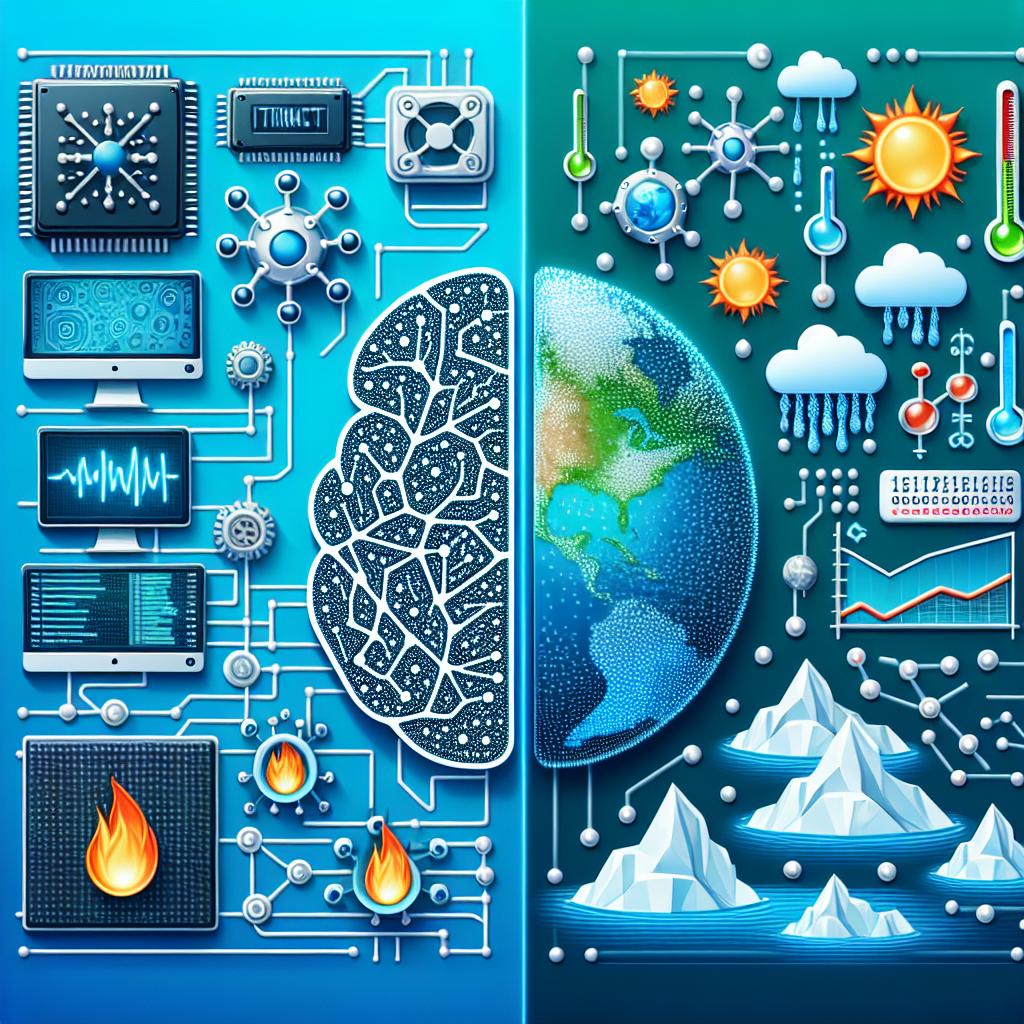The Role of AI Software in Climate Change Research
Climate change is one of the most pressing issues facing our planet today. With the rise in global temperatures, melting ice caps, and extreme weather events, it is more important than ever to understand and mitigate the effects of climate change. One tool that has been instrumental in this research is artificial intelligence (AI) software. AI software has the ability to analyze vast amounts of data, identify patterns, and make predictions that can help scientists better understand climate change and its impacts.
AI software is being used in a variety of ways in climate change research. One of the key areas where AI is making a difference is in analyzing satellite data. Satellites orbiting the Earth collect a massive amount of data on various climate variables, such as temperature, precipitation, and sea level. AI software can process and analyze this data much faster and more accurately than humans, allowing scientists to track changes in the climate in real-time and make more accurate predictions about future trends.
Another way AI software is being used in climate change research is in modeling complex systems. Climate models are used to simulate the interactions between different components of the Earth’s climate system, such as the atmosphere, oceans, and ice sheets. These models are essential for understanding how the climate is changing and predicting future scenarios. AI software can help improve these models by optimizing parameters, identifying uncertainties, and simulating complex feedback loops that would be difficult to model manually.
AI software is also being used to monitor and predict extreme weather events, such as hurricanes, droughts, and heatwaves. By analyzing historical weather data and using machine learning algorithms, scientists can better understand the factors that contribute to extreme weather events and improve their forecasting capabilities. This can help communities better prepare for and respond to these events, ultimately saving lives and reducing the impact of climate change.
One of the key advantages of AI software in climate change research is its ability to process and analyze vast amounts of data quickly and accurately. This allows scientists to uncover patterns and trends that would be impossible to detect using traditional methods. AI software can also help researchers identify new research questions and design more efficient experiments, leading to faster progress in our understanding of climate change.
Despite the many benefits of AI software in climate change research, there are also challenges and limitations to consider. For example, AI algorithms are only as good as the data they are trained on, so biases and inaccuracies in the data can lead to incorrect predictions. Additionally, AI models can be complex and difficult to interpret, making it challenging for scientists to understand how the predictions are being generated. Finally, there are ethical concerns around the use of AI in climate change research, such as data privacy and algorithmic bias.
Overall, AI software has the potential to revolutionize climate change research by providing scientists with powerful tools to analyze data, model complex systems, and predict future trends. By harnessing the power of AI, researchers can accelerate our understanding of climate change and develop more effective strategies for mitigating its impacts.
FAQs
1. How is AI software used in climate change research?
AI software is used in climate change research in a variety of ways, including analyzing satellite data, modeling complex systems, and predicting extreme weather events. AI algorithms can process and analyze vast amounts of data quickly and accurately, helping scientists uncover patterns and trends that would be impossible to detect using traditional methods.
2. What are the benefits of using AI software in climate change research?
One of the key benefits of using AI software in climate change research is its ability to process and analyze vast amounts of data quickly and accurately. This allows scientists to make more accurate predictions about future trends and better understand the impacts of climate change. AI software can also help researchers identify new research questions and design more efficient experiments, leading to faster progress in our understanding of climate change.
3. What are the limitations of using AI software in climate change research?
Despite the many benefits of using AI software in climate change research, there are also challenges and limitations to consider. For example, AI algorithms are only as good as the data they are trained on, so biases and inaccuracies in the data can lead to incorrect predictions. Additionally, AI models can be complex and difficult to interpret, making it challenging for scientists to understand how the predictions are being generated. Finally, there are ethical concerns around the use of AI in climate change research, such as data privacy and algorithmic bias.
4. How can AI software help with predicting extreme weather events?
AI software can help with predicting extreme weather events by analyzing historical weather data and using machine learning algorithms to better understand the factors that contribute to these events. By improving forecasting capabilities, AI software can help communities better prepare for and respond to extreme weather events, ultimately saving lives and reducing the impact of climate change.
5. What are some examples of AI software being used in climate change research?
Some examples of AI software being used in climate change research include analyzing satellite data to track changes in the climate, modeling complex systems to simulate the interactions between different components of the Earth’s climate system, and predicting extreme weather events such as hurricanes, droughts, and heatwaves. AI software is also being used to optimize parameters in climate models, identify uncertainties, and simulate complex feedback loops that would be difficult to model manually.

